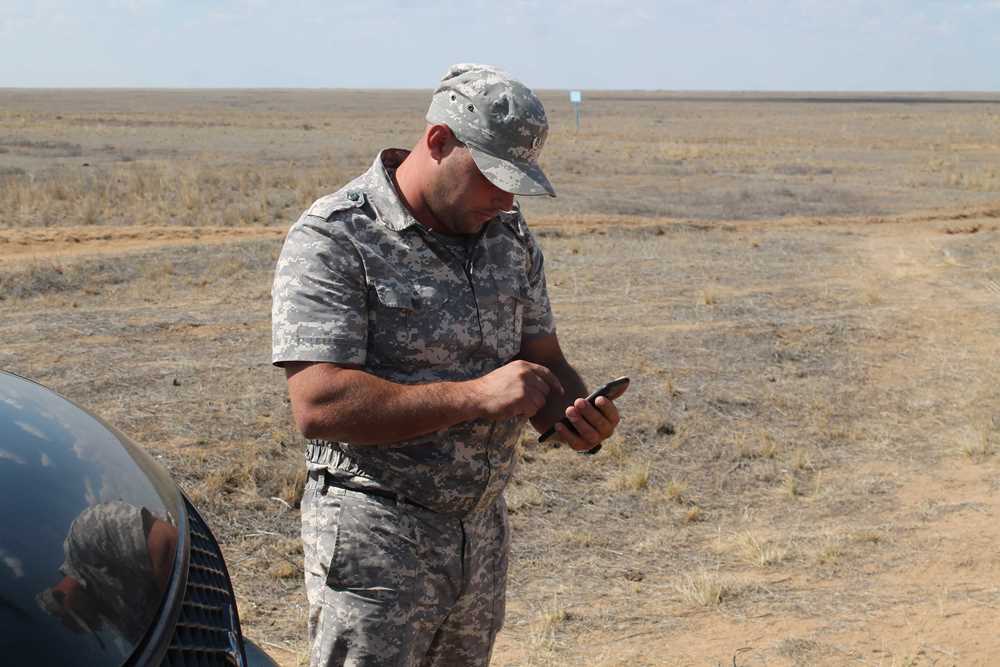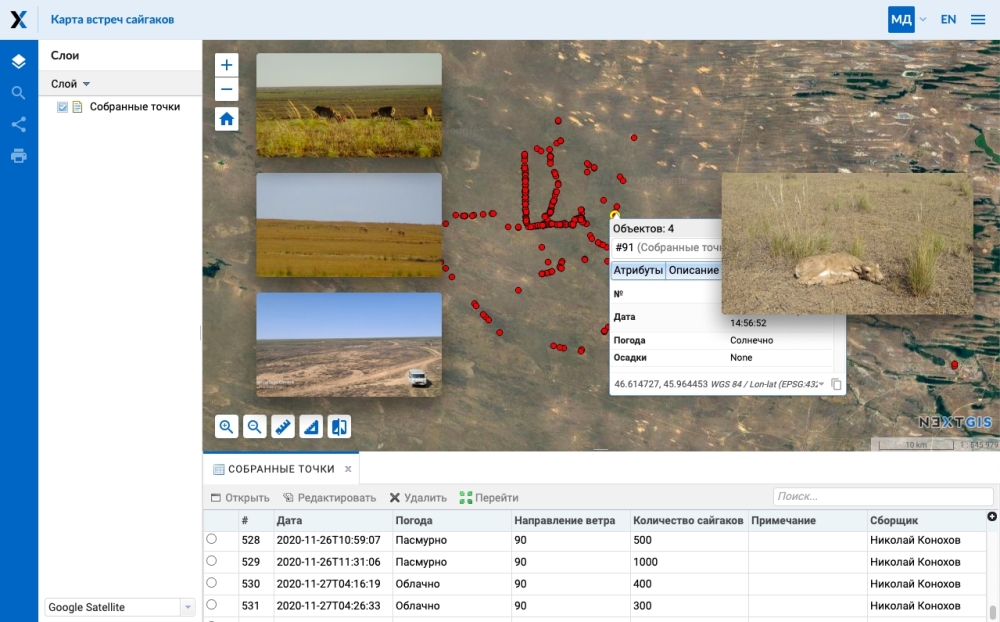
Specialists from the A.N. Severtsov Institute of Ecology and Evolution RAS (IEE RAS) for many years have been fruitfully cooperating with the staff of the Stepnoy Reserve located in the Limansky District of the Astrakhan Region, the information about the research can be found on the Institute's website. One of the areas of such joint work is related to the study and conservation of the saiga population in the North-Western Caspian region. On the territory of the Stepnoy Reserve, selected as a model site, for more than 15 years field data has been collected in a format developed by the Institute's staff, a comprehensive analysis of which made it possible to analyze the spatial distribution and ethological structure of this population, and also to establish that the main part of it throughout the year is kept within the Stepnoy Reserve and in the adjacent territories. The collected field materials, which are the basis for long-term monitoring, are extremely important for planning conservation measures aimed at the restoration of this saiga population both in the near future and in the long term.
Previously, field data on the sightings of saigas and other animals, climatic indicators, any factors and phenomena that may affect the well-being of a small and completely isolated population of the North-Western Caspian Sea region were recorded by the staff of the Reserve in "paper forms" with their subsequent "transfer" to the electronic database, which significantly slowed down the process of preparing data for analysis.

In order to keep up with the times and put the achievements of modern technologies to good use, dispensing with the use of "paper forms" in the field, the staff of the Stepnoy Reserve and the IEE RAS turned to the management of NextGIS (headed by M. Dubinin) with a request to create a program that would allow make field data collection more technological. Such a product turned out to be NextGIS Collector technology, developed by the company, which allows you to set up forms for collecting observations in a matter of hours, organize the database itself and launch your own project. Previously, NextGIS Collector technology has proven itself well for collecting field data on species of wild animals such as wolves and snow leopards living in different natural conditions.
After the adaptation of the software for the specific tasks aimed at the saiga population inhabiting the North-Western Caspian region, in February 2020, a special field workshop was held for the staff of the Stepnoy Reserve, during which the capabilities of NextGIS Collector were demonstrated, with special attention paid to eliminating possible failures and finalizing the product itself in the process of use, and, of course, employees were trained in the procedure for collecting and transmitting field data. It must be said that the initial skepticism of the Stepnoy Reserve staff associated with the change in their routine and habitual work of filling out “paper forms” quickly changed to an understanding of the transition to a completely new modern level of field data collection.

Almost 10 months have passed since the start of the project on collecting data on the territory of the Stepnoy Reserve using NextGIS Collector, and these months have shown how correct the choice was. The well-established communication with the developers made it possible to promptly make corrections and adjustments to the failures that occurred in the early days of using the software. Now the staff of the Stepnoy Reserve, having quickly and easily mastered all the capabilities of the program, use smartphones to enter field observations into electronic forms, which are automatically transferred to a database suitable for any processing and analysis by the IEE RAS staff. To date, the database contains more than 500 meeting points for saigas with the ability to show the location on the map of the gathering point and attached photographs that help to identify the landscape features of the area. Collecting field data continues, and we look forward to receiving new information on the biology and ecology of the Northwest Caspian saiga population!
Illustrations:
1. Entering data into the NextGIS Collector application (photo by G. Kalmykov)
2. Electronic input form on the smartphone screen (photo by G. Kalmykov)
3. A fragment of a completed database and a photograph on an automatically updated map
